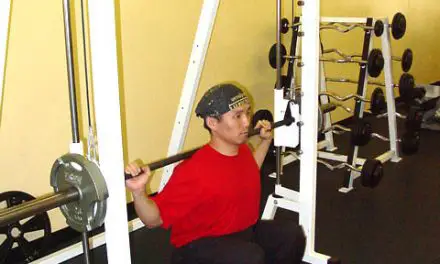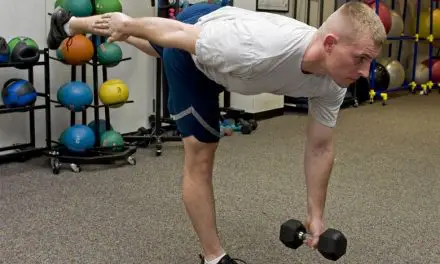Strength training is not limited to a single type. For example, if you want to increase your maximum strength for powerlifting or just want to see how much you can lift, you might go for heavy, low-repetition and high-set exercises. However, if you’re looking to improve muscular endurance for long-distance running or basketball, then you might focus on lighter weights and higher repetitions.
Types of strength
There are five common types of strength training where some of these may have overlapping features.
Absolute strength
Absolute strength—sometimes called maximal strength—is the “maximum tension level that a muscle group can produce” in one full repetition, or one-rep max (1RM). You may have heard people ask, “How much can you deadlift?” or “Dude, what’s your bench?” These all refer to absolute strength.
A typical absolute strength workout involves a high number of sets and intensity (90%–100% of 1RM), a low number of reps, and long rest periods. Tempo may vary, but in most cases, the focus is on concentric contraction.
Sports that rely on relative strength include:
- powerlifting
- American football
- wrestling (yep, even entertainment wrestling)
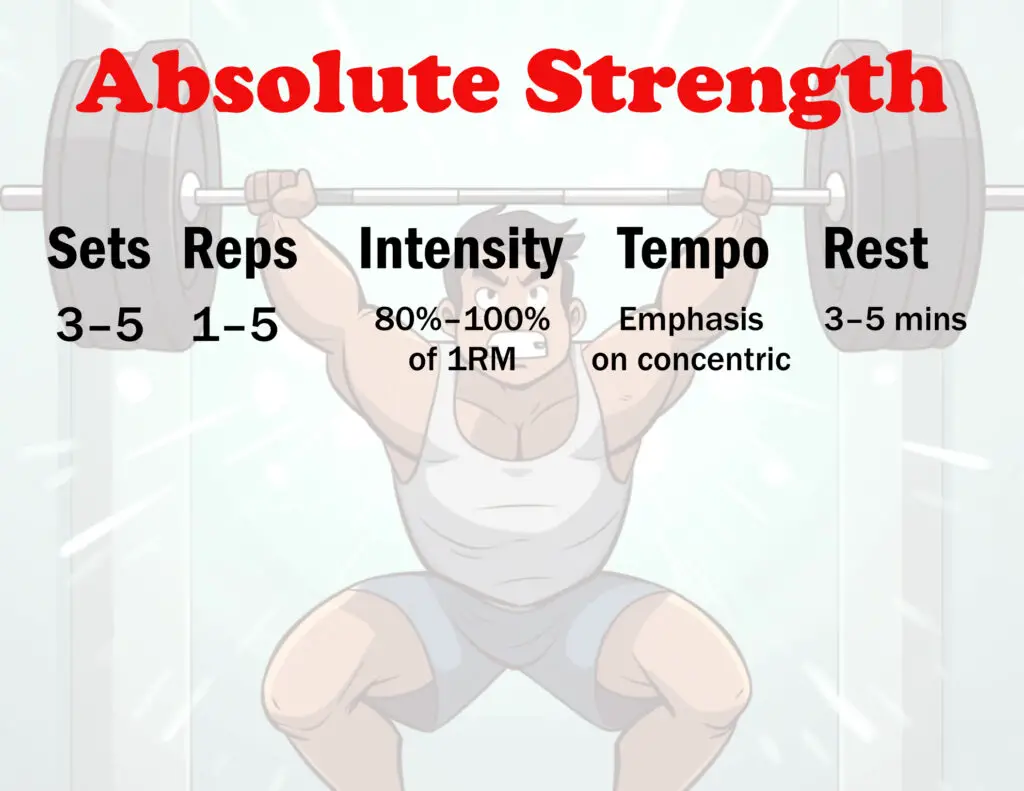
Absolute strength refers to the most amount of weight you can lift or move in one full repetition, or one-rep max (1RM). (Image by Nick Ng)
Relative strength
Relative strength is how much weight you can move relative to your own weight. For example, if you weigh 120 pounds and you can lift 50% of your body weight, that means you can lift 60 pounds. Likewise, if you weigh 200 pounds, 50% of your weight is 100 pounds. If you’re 120 pounds, lifting 100 pounds would be 83% of your body weight.
Applying this to strength training, don’t compare yourself to what someone else can lift, especially if they weigh far more or less than you. Focus on what you can do based on your own abilities.
Furthermore, weight alone is not a reliable measure of relative strength. Two people with the same weight can have different muscle and fat mass. A 200-pound person with 25% body fat may have lesser muscle mass than another 200-pound person with 10% body fat. Depending on each person’ training experience, their relative strength may vary greatly like a 150-pound person vs. a 200-pound person.
Sports that rely on relative strength include:
- gymnastics (e.g. parallel bars, Olympic rings)
- figure skating
- martial arts (e.g. grappling, weapons)
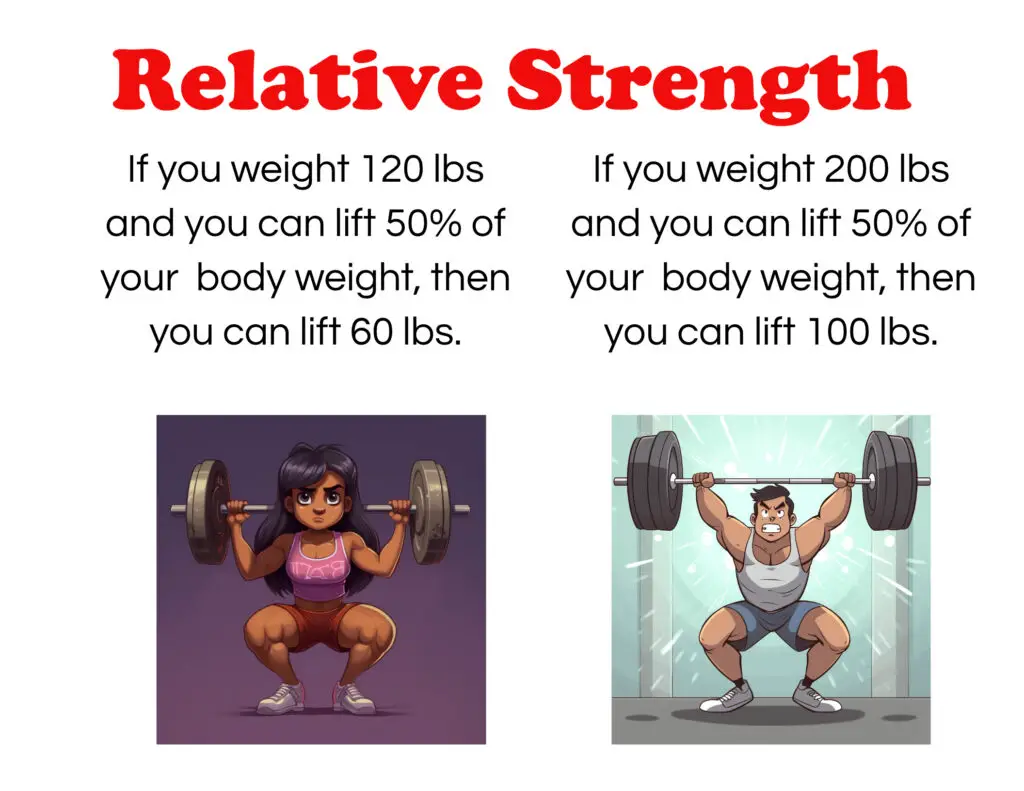
Relative strength is how much you can lift based on your body weight. However, weight alone is not enough to determine how much weight someone can lift. (Image by Nick Ng, illustrations via Midjourney)
Endurance strength
Endurance strength refers to how long your muscles can sustain and work repeatedly over a period of time against a resistance, like with a free weight, machine, or body weight. This is not to be confused with endurance training which is also aerobic training, like running and cycling.
Think of endurance strength training as the “opposite” of absolute strength training. Instead of asking “How much do you squat?” you’d ask, “How long can you squat?”
Sports that rely on relative strength include:
- long-distance sprinting
- kettlebell lifting competition
- basketball
- boxing
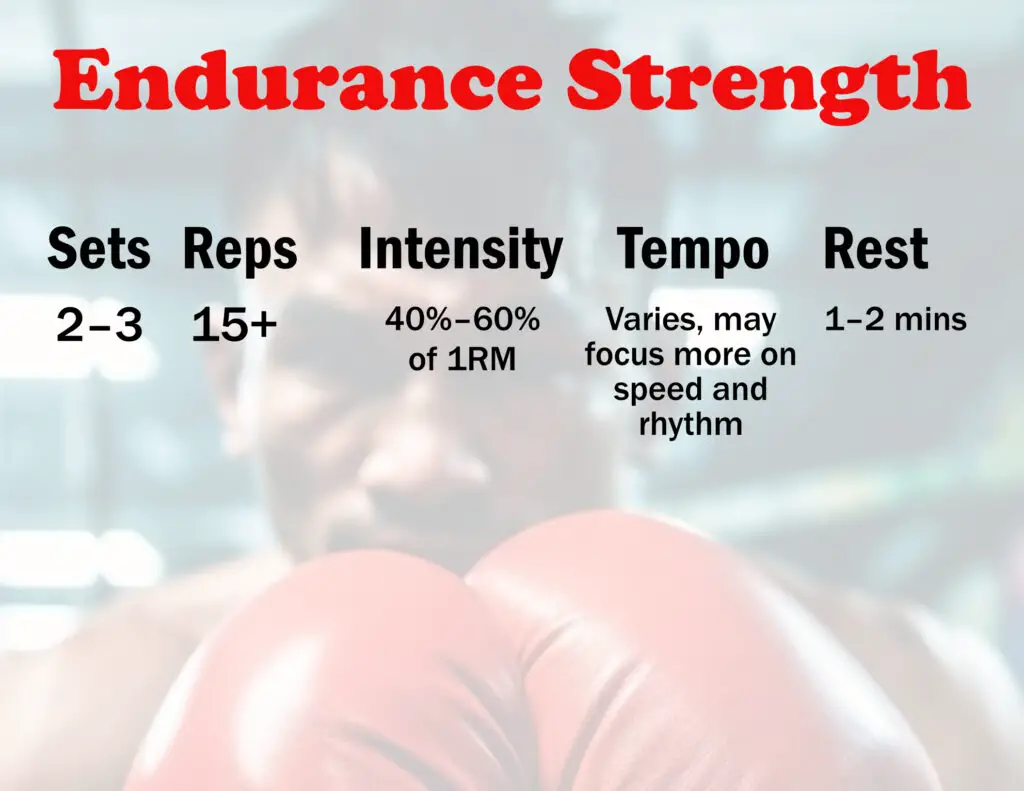
Endurance strength refers to how long your muscles can sustain and work repeatedly over a period of time against a resistance. (Image by Nick Ng)
Explosive strength
Explosive strength, or power, is how fast you can move the weight. This can be lifting weights repeatedly and quickly, and it can be high to moderate intensity, depending on what you’re training for.
Regarding intensity and volume, explosive strength comes in a spectrum between absolute strength and endurance strength.
For example, a soccer kick or a lacrosse throw would require lower reps and higher intensity with speed training. However, certain floor gymnastics moves, wing chun chain punching, and the 100-meter hurdles would require you to do bouts of explosive strength.
Other sports that rely on explosive strength include:
- hockey
- baseball
- pole vaulting
- basketball
- javelin throwing
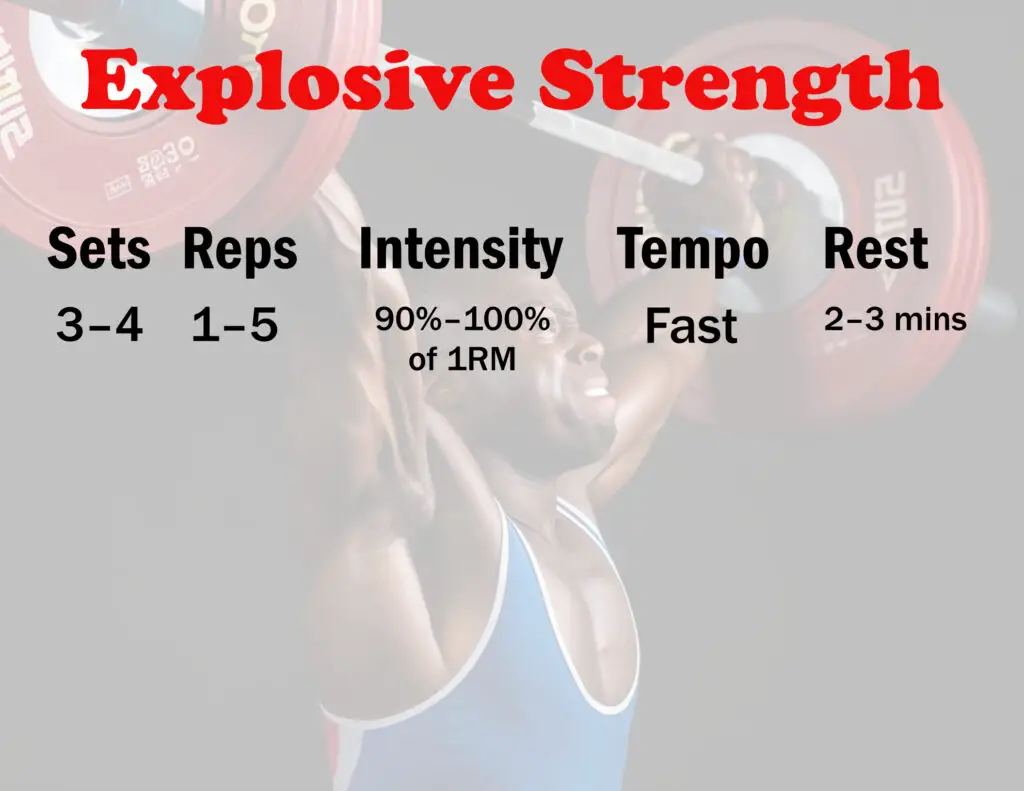
Explosive strength emphasizes on speed and high intensity. (Image by Nick Ng)
Functional strength
Functional strength training is a mix bag of different types of strength, kind of like mixed martial arts. Rather than focusing on just strength, speed, or endurance, functional strength emphasizes how you move and for specific purposes.
For example, a wrestler or golfer who wants to get stronger obliques might do rotational exercise with a cable machine or a medicine ball. Of course, these do not substitute the actual throwing maneuvers or golf swings with a golf club. The key is movement specificity, based on the SAID principle: you get better at what you’re training to do.
Functional training can also apply to physical therapy where a construction worker, who is recovering from a knee surgery, might perform exercises that initially mimics the movement patterns that they might do at work. It’s the same with people trying to get back to doing activities of daily living, such as picking up their kids, getting up from a chair, or maintaining balance while climbing stairs.
There’s no definite exercise factors for functional training. You can use any types of strength to fit your goals.
Further reading: [“Fun” is Missing in the FITT Principle]
Strength training factors to consider
If you want to start your own strength training program, consider the following exercise factors:
Sets and reps, volume, and intensity
Typically, the more sets and reps you do, the higher your training volume will be. But to do so, intensity tends to be lower (about 40%–60% of 1RM). And of course, higher intensity usually means fewer reps and sets, especially as you creep close to 90%–100% of 1RM.
Frequency
Frequency refers to how many times you train per week, and the type of strength you train may affect how often you train. A 2019 systematic review of 25 studies found that frequency doesn’t matter much in the muscle hypertrophy results in the upper or lower body. However, the studies included only reviewed body parts in the limbs, and the exercises used were single-jointed, not multi-jointed like squats and rows. Also, almost all the studies are based on healthy, young men and may not apply to other populations.
Currently, the American College of Sports Medicine recommends that most people should do at least two days a week of strength training for the major muscle groups at one set of 8–12 reps. Combined with aerobic exercise, a 2018 study of more than 1,700 people from age 21–80 found that, within a 10-week exercise program, the subjects:
- lost an average of nearly 2% body fat
- lost an average of 1.7 kg (3.75 lbs)
- lowered blood pressure by 3.83 mm Hg (systolic) and 1.73 mm Hg (diastolic)
Of course, exercising more than one day a week (ideally 3 to 4 days) would likely yield higher body fat percentage loss, the study reported.
Tempo
Tempo refers to the speed in which you lift the weight. This is where you focus on the lifting phase, the lowering phase, or both.
For muscle growth, some experts emphasize that you should focus on eccentric contractions (lowering a weight). However, a 2022 systematic review finds that concentric contractions (lifting the weight) induce muscle hypertrophy in the middle of the muscle body, while eccentric contractions induce growth at the distal ends of a muscle.
Rest periods
The ACSM recommends that if you’re training for maximum strength and power, you should rest between 3–5 minutes between sets. For muscle growth, rest between 1–2 minutes. However, for the latter, some research suggests that you should rest longer than one minute.
For endurance strength training, ACSM suggests fewer than 90 seconds of rest between sets.
Periodization
Periodization is the gradual progression of an exercise program, whether you’re training for strength, aerobic endurance, or power. These programs can go from six weeks to one year. There are two types of periodization:
- Linear: a gradual increase in volume ( more sets or reps) or load (more weight, intensity)
- Non-linear: a gradual increase and decrease of volume and load
The linear method was originally for Olympic weightlifters where they train for peak strength on the week of the competition. Thus, this doesn’t apply to athletes or people in rehab who do not require such gradual increase over time.
The non-linear method was proposed in the late 1980s for American football players, which later was adopted by various team sports. By changing the factors more frequently to allow the nervous and muscular systems to recover longer between heavy training weeks.
Further reading: [How to Train for Hypertrophy vs. Strength, According to Science]
A native of San Diego for nearly 40 years, Nick Ng is an editor of Massage & Fitness Magazine, an online publication for manual therapists and the public who want to explore the science behind touch, pain, and exercise, and how to apply that in their hands-on practice or daily lives.
An alumni from San Diego State University with a B.A. in Graphic Communications, Nick also completed his massage therapy training at International Professional School of Bodywork in San Diego in 2014.
When he is not writing or reading, you would likely find him weightlifting at the gym, salsa dancing, or exploring new areas to walk and eat around Southern California.


